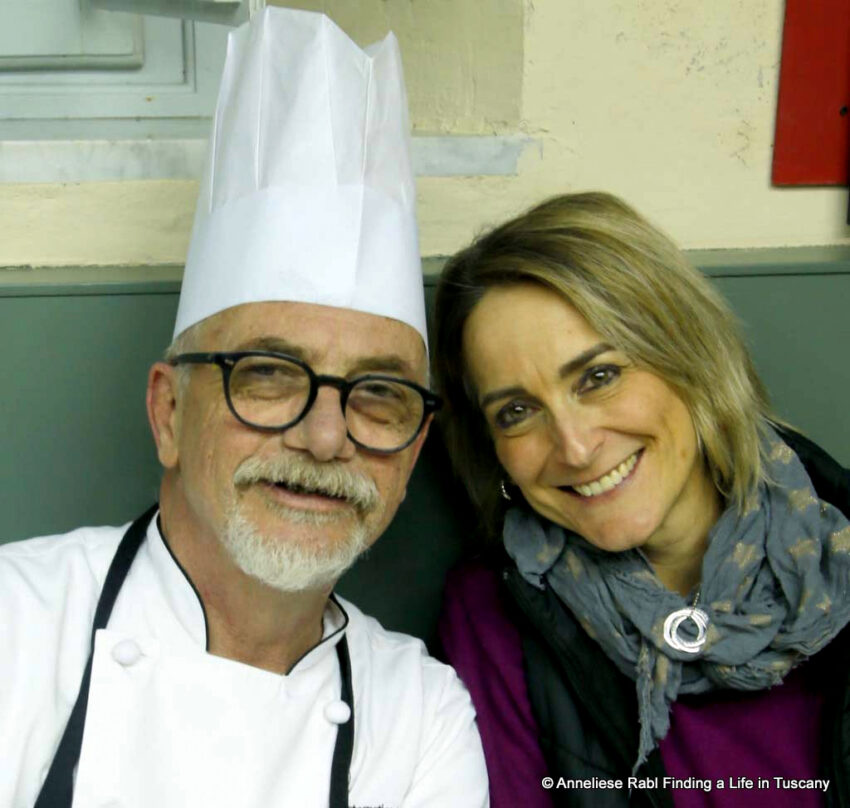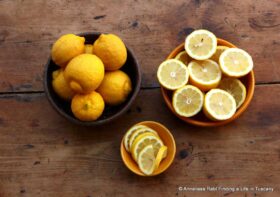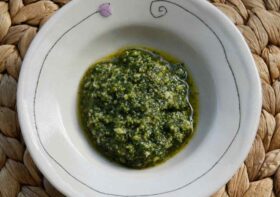The challenge of the century?

I don’t think so. However, we are still talking about a challenge between two shooting stars, ready to confront each other. May the best step forward and the loser step back!

What was the deal? A meeting between Karin, a skilled Austrian, well organised, enterprising and very nice and Gianluca, a skilled Italian cook, known for being nice, enterprising and well organized.

The challenge? Schnitzel (Viennese), or cutlet (Milanese), cooked in the Austrian and Italian way. Here we are entering a minefield. There are, in fact, those who claim that schnitzel would be nothing more than a copy of the cutlet. Others believe the exact contrary. True is that already in the twelfth century in Constantinople (today’s Istanbul), people appreciated meat carefully wrapped in pasta and then fried and eaten nice and hot.

But let’s go back to the challenge. It would be held in Lucca, Tuscany, inside a closed convent for cloistered nuns (now headquarters of the International Academy of Italian Cuisine of chef and owner Gianluca Pardini). For those who, like me, are not too familiar, it is a place intended solely for members of an order. With rare exceptions, no strangers may enter and monks and nuns are only allowed to leave with a special permit. It is not uncommon for them to spend their entire lives in these buildings protected from the outside world. The convent, in fact, symbolizes the boundless uninhabited desert chosen by hermits as a living space.

The monastery was truly simple and austere but also quiet and full of peace. On two tables lined up, we saw the basic ingredients and equipment needed to make the recipes. We were divided into two groups. In the first it would be spoken only in Italian, in the other exclusively in English. In this way, in addition to learning the two recipes, we would also have been able to practice a foreign language.


The audience, in fact, was colorful, teenagers, adults in the best of years and those who were young at heart. The aperitif, excellent, gave everyone the opportunity to introduce themselves and soon Americans, English, Germans and Italians were ready to participate in the creation of the future winning dish.

Instead of the traditional milk veal, the challengers had chosen two different raw materials, namely pork and chicken meat. For the rest, apart from a few small secret ingredients to give more flavour, the preparation was practically authentic. Coating the meat with flour, dipping into salted and peppered egg wash, covering completely with bread crumbs.


The personal touch? Gianluca literally stroked his slices of meat gently before placing them on a tray ready to be carried into the kitchen. Karin used strong manners by beating the meat repeatedly and forcefully with a hammer which, however, made it very, very tender.




The whole procedure lasted less than half an hour and after another ten, fifteen minutes of frying we found ourselves in front of the results. The Austrian version with the traditional potato salad, cranberry jam and a slice of lemon to squeeze on the meat. The Italian one with both red and white sauerkraut and a tasty salad with mayonnaise. White wine and water to round off the picture.


Arriving at the dessert, a nice slice of Sacher Torte (traditional Austrian chocolate cake), we secretly voted for the version we liked better. Who won? Both dishes were absolutely tasty. In the end, however, Karin won. Deservedly. A doubt, however, remains. The challenge took place on March 8, Women’s Day. Who, I wonder, would have had the courage to make Gianluca, that is a man, win that day?

For me, we have to redo the challenge. Personally, I’m more than ready…



Leave a Reply